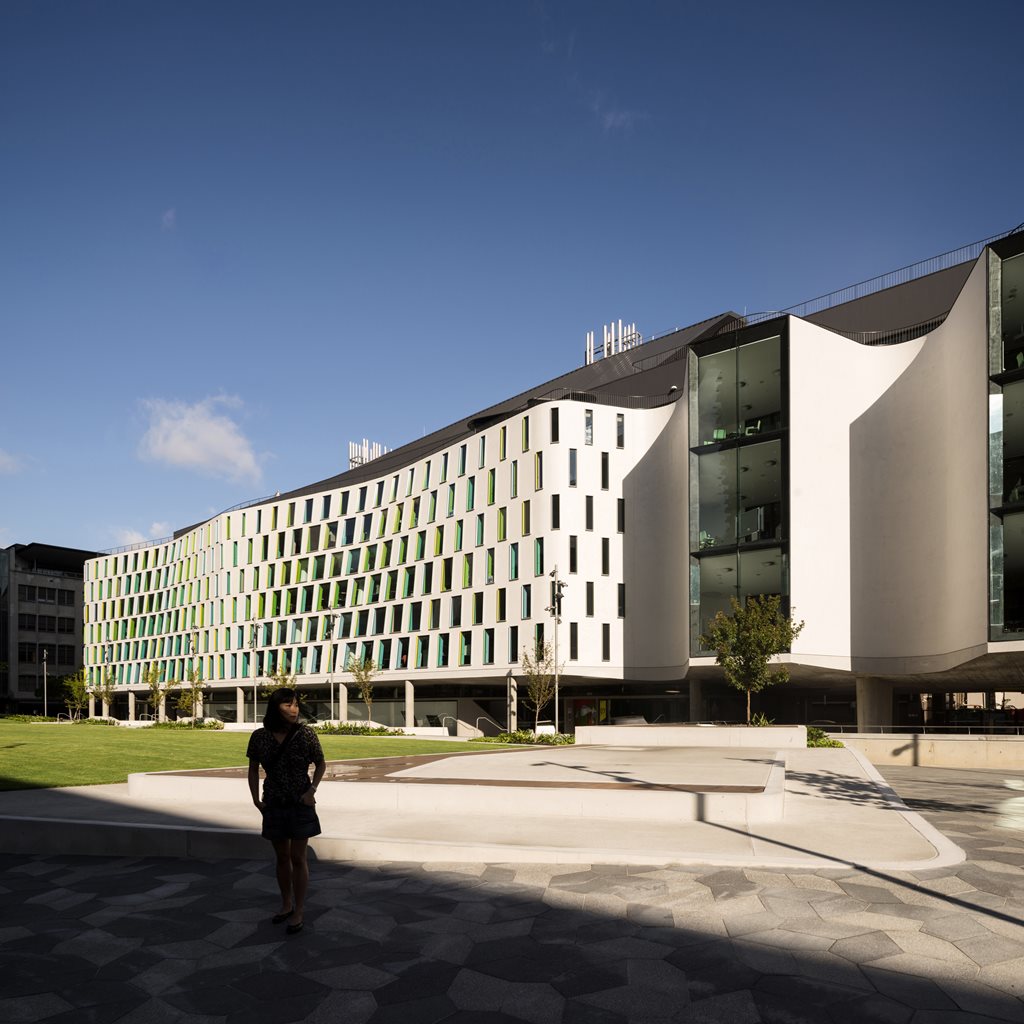The UTS Thomas Street Building by Steensen Varming, BVN architects and Durbach Block Jaggers Architects took out the Public Building Category prize at the 2015 Sustainability Awards.
The building was placed first ahead of a strong field of eight finalists and a record number of entries. Scroll to the bottom to see comments on this ground breaking project from our expert judges.
The Thomas Street Building is the new Faculty of Science and Graduate School of Health at the University of Technology Sydney.
The 15,000sqm building features a variety of laboratories with specialist research support areas, including PC2 research laboratories, a clean suite with embedded PC2 labs, open plan workspaces and a 'Super Lab' that will give large numbers of students access to the latest technology in a single laboratory space.
 Supply air to the building’s lab is pre-conditioned through a subterranean labyrinth formed around the perimeter of the Library retrieval system located under the Alumni Green. Photography by Darren Bradley and Peter Bennetts.
Supply air to the building’s lab is pre-conditioned through a subterranean labyrinth formed around the perimeter of the Library retrieval system located under the Alumni Green. Photography by Darren Bradley and Peter Bennetts. 
Steensen Varming led the sustainability solution for the project, carrying out sophisticated energy modelling throughout the design to inform sustainable design solutions.
The project demonstrates progress in green building practice, having achieved a 6 Green Star certified design rating by the Green Building Council of Australia which is a first for UTS and represents world leadership in the sustainable design of public buildings.
The building also achieves a UFA in excess of 60 per cent, which is far in excess of typical laboratory buildings.
KEY INITIATIVES
- Daylight access and control
- On-site renewable energy via roof-mounted PV
- Solar domestic hot water system
- A 27,000 litre rain water tank to service the rooftop garden and the toilets
- A labyrinth system that naturally pre-tempers incoming air and low flow fume cupboards that reduce the ventilation rates and building fan power
- All of which combine to reduce the building's running costs by 20 per cent compared to a similar benchmark building.
Jury Citation
“Adopting an integrated design approach to sustainability, this project strikes a fine balance between passive and active systems, ensuring an international best practice design for the client. The use of a labyrinth below the adjacent park / public space is great to see as were the roof top gardens, light wells and garden recesses which improve the access to daylight and IEQ for occupants.
“The rainwater harvesting and reticulation is also notable as is the use of recycled glass to the façade, and all of its performance claims are cemented by both the credible data which demonstrated the improved performance of the building and the efforts to reduce construction waste by 98 per cent.”
 The award for Public Building & Urban Design was proudly sponsored by HP
The award for Public Building & Urban Design was proudly sponsored by HP

